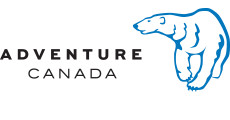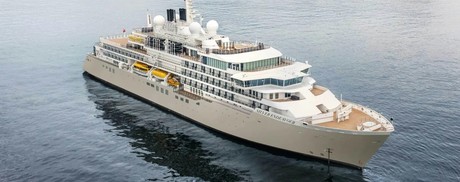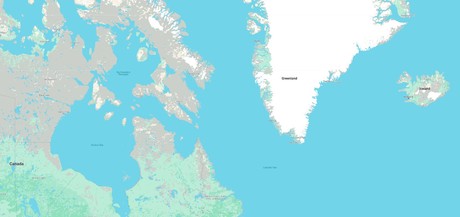Pond Inlet, Nunavut to Reykjavik - Canada, Greenland & Iceland Luxury Cruise
Join us on an immersive 26-day adventure which delves into the remote parts of the Arctic and Greenland. Set sail from Pond Inlet, Canada, and explore off-the-beaten-track as we travel in ultra-luxury all the way to Reykjavik, Iceland. Witness blue-hued glaciers, snow-capped mountains, and rare wildlife. Whether it’s looking for Polar Bears in the Lower Savage Islands, or admiring icebergs in Prince Christian Sound, this is the journey of a lifetime.
Highlights
• Cape York, Greenland: Embark on a memorable excursion to Cape York, Greenland, and witness the breathtaking landscapes of this remote destination. Immerse yourself in the natural beauty and unique experiences offered by the Arctic environment.
• Qaanaaq (Thule), Greenland: Explore the northernmost town in Greenland, Qaanaaq, with two exciting excursions. Discover the local culture, history, and the Arctic wilderness, providing an immersive experience in this remote part of the world.
• Reykjavik, Iceland: Conclude your journey in the vibrant city of Reykjavik, Iceland. Explore the unique blend of Icelandic culture, history, and modern charm in the capital city, offering a perfect finale to your Arctic adventure.
Located in northern Baffin Island Pond Inlet is a small predo¬minantly Inuit community with a population of roughly 1 ,500 inhabitants. In 1818 the British explorer John Ross named a bay in the vicinity after the English astronomer John Pond. Today Pond Inlet is considered one of Canada's "jewels of the North" thanks to several picturesque glaciers and mountain ranges nearby. Many archaeological sites of ancient Dorset and Thule peoples can be found near Pond Inlet. The Inuit hunted caribou, ringed and harp seals, fish, polar bears, and walrus, as well as narwhals, geese, ptarmigans and Arctic hares long before European and American whalers came here to harvest bowhead whales. Pond Inlet is also known as a major center of Inuit art especially the printmaking and stone carving.
Beechey Island is a small island off the southwest coast of Devon Island, separated by a narrow waterway called the Barrow Strait. Captain William Edward Parry was the first European to visit the island in 1819. His lieutenant, Frederick William Beechey, named the island after his father, the artist William Beechey (1753–1839). Beechey Island played a significant role in the history of Arctic Exploration. During the winter of 1845-46, Sir John Franklin and his men camped on the island as part of their ill-fated quest to find the Northwest Passage. Mummified remains of three of Franklin’s crew were discovered, giving a better understanding of what happened before the disappearance of the expedition. In 1850 Edward Belcher used the island as a base while surveying the area. Later, in 1903, Norwegian explorer Roald Amundsen stopped at the island at the beginning of his successful voyage in search for the Northwest Passage. Subsequently, Beechey Island has been declared a "Territorial Historic Site" by the Northwest Territories government in 1975 and a National Historic Site of Canada in 1993. It now is part of Nunavut.
Devon Island is Canada’s sixth largest island and was first seen by Europeans in the early 17th century. The Thule culture had already settled there many centuries before, and left behind qarmat homes, made of rocks, whale bones, rock and sod walls, and skins for roofs that tell a story of over 800 years of human habitation. Other striking finds in this area are the many fossils of corals, crinoids and nautiloids that can be seen. Just across Lancaster Sound is Prince Leopold Island, a Canadian Important Bird Area, a federally listed migratory bird sanctuary, and a Key Migratory Bird Terrestrial Habitat site with large numbers of Thick-billed Murres, Northern Fulmars and Black-legged Kittiwakes that breed there.
Croker Bay is a vast cerulean deep-water bay nestled on the southern coast of Devon Island which is in the Qikiqtaaluk Region of Nunavut, Canada. This 40km (24 miles) long Arctic waterway boasts rugged rock terraced mountains which sit atop two beautiful blue ice tidewater glaciers. Devon Island is Earth’s largest uninhabited island and is a breath-taking 55,247 km2 (21,331 square miles) patchwork of Precambrian gneiss, Paleozoic siltstones and shales. Known locally as “Mars on Earth” the dazzling otherworldly landscape offers spectacular views. The snow-topped ancient stone is dappled with rich hues of terracotta, red and blue. Devon Island is one of many islands that make up the picturesque Canadian Artic Archipelago and has a scattering of mountain ranges including the Treuter Mountains, Haddington Range and the Cunningham Mountains. Croker Bay was named in 1819 by the explorer William Edward Parry in honour of John Wilson Croker, a parliamentarian and Secretary to the Admiralty.
Austere, remote and a rather severe, Devon Island is as close the closest thing to Mars on planet Earth. The rocky terrain, dry, cold climate and 14-mile wide crater on the north of the island have made it home for a team of research scientists from NASA, who live in the small research station during the Arctic summer. Other than these few men and women, Devon Island is completely unpeopled, and the largest uninhabited island in the world. There was human habitation as recently as 1951, when a Canadian Mounted Police post that had been on the island since 1924 to monitor illegal activities such as whaling closed. At 320 miles long and 80–100 miles wide, it is the largest of the Parry Islands. Dundas Harbour is found in the south of the island. Then island is set in the icy Arctic Ocean, south of Ellesmere Island and west of Baffin Bay. This make it Canada’s sixth largest island. Discovered by English explorer William Baffin in 1616, the island did not make it on to any maps until William Edward Parry’s exploration of the Arctic in 1820. Despite the desolate conditions, the island does show signs of having sustained human life as many as 3,000 years ago, with the remains of a Thule settlement dating back to 1000 A.D., including tent rings, middens and a gravesite providing testament to the fact. The island is named Talluruti in local Inuktitut language, literally translating as “a woman’s chin with tattoos on it”, as from a distance the deep crevasses resemble traditional facial tattoos.
Nestled on the southern tip of Canada’s Ellesmere Island Grise Fjord is a remote and isolated wonderful wilderness. Located at the top of the world at 1,160 kilometers (721 miles) north of the Artic Circle you’ll gaze in wonder at the frozen beauty as you enter the fjord. The stunning ice-blue waters of the fjord are tucked between two towering snow-dusted cliffs. The land never thaws out even when the sun shines twenty-four hours a day from April through to August. Indeed, the fjord’s name in Inuktittuq means “the place that never thaws”. In 1899, Norwegian explorer Otto Sverdrup named the place “pig fjord” because the sounds of the local walrus called to mind a chorus of grunting pigs. Grise is the Norwegian word for pig. Today you’ll find a profusion of local wildlife: Ringed seal, Bearded seal and Harp seal, walruses, Narwhal and Beluga Whales can all be seen in the sea. The skies are home to Ravens, Ivory gulls, Jaegers, Geese, Gyrfalcons, Kittiwakes and Northern Fulmars. Polar bears and Muskoxen also roam the land of this northern wilderness. In 1953 the hamlet was formed at Grise Fjord by the Canadian government. They relocated Inuit families from Inukjuak, Quebec. This is the most northerly public community in Canada and is comprised of no more than 150 residents. This is one of the most cold inhabited places on the planet with an average temperature of a chilly -16.5 degrees centigrade.
Markison Fjord is an immense natural sculpture that will surely get the pulse racing. Witness the deft artistry of mother nature first-hand as a spectacular world of snow-capped peaks and expansive ice caps beckons you in to explore. Markison Fjord carves scenically into Canada's remote Ellesmere Island - the northernmost island of the Canadian Arctic Archipelago. Sail into its narrow channel, passing the terminus of pristine glaciers and navigating island obstacles - taking it all in from the visceral vantage point of the Zodiacs. Silversea's expedition experts will get you up close to thrilling experiences - like creaking glacier ice meeting inky arctic waters - and help you spot the region's unique wildlife, such as the elusive Arctic fox slinking through the frozen landscape. Perhaps you'll even experience the heart-stopping moment of making eye contact with a majestic polar bear. Encounters with grunting walruses and adorable beluga whales may also await as you explore this northern realm of dazzling natural display.
Alexandra Fjord is a naturally formed inlet on the Johan Peninsula of Ellesmere Island. Although no permanent residents live here, it has been used periodically for a variety of purposes over the years. The Royal Canadian Mounted Police had a station here for ten years, from 1953 to 1963, during the beginning of the Cold War. At the time, it was the northern-most police station in the world. Later, between 1987 and 1992, this location was used as a seasonal research base.
Located on the Hayes Peninsula and bathed by Inglefield Fjord, Qaanaaq – formerly named Utlima Thule, is a charming Greenlandic town. Known as the northernmost town in Greenland, Qaanaaq offers many incredible experiences very specific to the Arctic. The famous Midnight Sun for instance, a period during which the sun never sets. Hard to picture but extraordinary to witness, this phenomenon is visible between late-April and late-August. Land of extremes, Greenland welcomed various immigrating peoples, ready to face the Arctic challenging living conditions. Among these, the Inuit left their mark in Qaanaaq. Their hunting traditions with kayaks and dog sleds are still present and necessary to survival, given Qaanaaq’s isolation. Visit the town’s museum to discover more about the area’s history and the Inuit culture. The Qaanaq museum can be found in a white house in the middle of the town’s colourful houses. The latter used to be the home of famous Arctic explorer Knud Rasmussen who set off seven expeditions from Qaanaaq’s area. The museum contains an exhibition about him and other explorers, but also historical items like “tupilaqs”, avenging monsters made with various objects like animal bones, which have great importance in the Greenlandic Inuit religion. Off the town’s shores and in the shade of massive icebergs, the cold waters home thousands of narwhals. These toothed whales also nicknamed the “unicorns of the sea” love coming to Qaanaaq to breed during summer, giving you a chance to spot some of them during this period.
Visit the arctic seascape of Cape York, Greenland. Located on the northwestern coast of Greenland in Baffin Bay, Cape York is an important geographical feature delimiting the Melville Bay at its northwestern end and Kiatassuaq Island at its other end. There is a chain of coastal islands that stretches between the two capes, most notably Meteorite Island, named for the discovery one of the world’s largest iron meteorites in Savissivik, a settlement on the island. The iron from this meteorite attracted Inuit migrating from Arctic Canada who used the metal in making tools and harpoons. Visitors to this region will see iconic drifting blue-white icebergs that are shrinking as the earth temperature rises.
Located in northern Baffin Island Pond Inlet is a small predo¬minantly Inuit community with a population of roughly 1 ,500 inhabitants. In 1818 the British explorer John Ross named a bay in the vicinity after the English astronomer John Pond. Today Pond Inlet is considered one of Canada's "jewels of the North" thanks to several picturesque glaciers and mountain ranges nearby. Many archaeological sites of ancient Dorset and Thule peoples can be found near Pond Inlet. The Inuit hunted caribou, ringed and harp seals, fish, polar bears, and walrus, as well as narwhals, geese, ptarmigans and Arctic hares long before European and American whalers came here to harvest bowhead whales. Pond Inlet is also known as a major center of Inuit art especially the printmaking and stone carving.
Buchan Gulf is a deep, elongated gash carved by glaciers during the last Ice Age that cuts 22 miles into the eastern shores of Baffin Island. The most striking feature in the Gulf ate impressive steep coastal cliffs and rock pinnacles. The cliffs are comprised of hard Precambrian metamorphic rock that rises as much as 2,000 feet from the sea. The conditions are perfect for nesting Northern Fulmars, and in fact, this area is one of the most important nesting sites for these birds in the world. European explorer William Baffin first ventured here in the 15th century to search for the Northwest Passage
Days at sea are the perfect opportunity to relax, unwind and catch up with what you’ve been meaning to do. So whether that is going to the gym, visiting the spa, whale watching, catching up on your reading or simply topping up your tan, these blue sea days are the perfect balance to busy days spent exploring shore side.
Located at the heart of Nunavut, on Baffin Island’s Cumberland Peninsula, Auyuittuq National Park offers you one of the most beautiful and striking landscapes in Canada. Large valleys and steep-walled fjords surrounded by a skyline of irregular peaks and massive glaciers, exactly how you would picture the Arctic.
Auyuittuq homes little vegetation, however, you can however spot some arctic wildlife species in these stunning and serene landscapes. Arctic foxes, caribou, lemmings, snow geese, ermines, but also polar bears and many bird species like peregrine falcons can be observed. Several cetaceans species frequent the surrounding waters of the island, narwhals, beluga whales and orcas being the most likely to be seen. The coasts of the island are a haven for many seabirds like the king eider or the little auk.
Established a national park in 1972, Auyuittuq holds an extremely important place in Canada’s history due to its location. Many civilisations visited Auyuittuq since the first people settled during the Stone Age, noting the ideal conditions for whaling. Among them, Norse and English explorers but also the Inuit, a people that left his mark on the island and all the Nunavut region. Auyuittuq means “The Land That Never Melts” in Inuktitut, the national park’s land being covered by the huge Penny Ice Glacier.
Cape Dyer is a remote wilderness and lies at the southeast tip of Canada’s vast Baffin Island. It is located north of the Arctic Circle in the Canadian territory of Nunavut. Terraced cliffs rise up out of the icy sea as you sail close to land and there is a smattering of the purest white snow-capped mountains in the distance. Baffin Island is the largest island in Canada with a vast rugged landscape which measures 507,451 square kilometers (195,928 square miles). It is the fifth largest island in the world. If you're lucky you might just spot one of the Polar bears which populate the island. Other animals which roam these cold lands include Arctic foxes, Caribou and Arctic hares. Seals and walruses can be seen hauled-out or close to shore in the water. Keep a look out for whales in the sea around Baffin Island, there are four species for eagle eyed nature watchers to spot - Narwhals, Orca, Beluga and Bowhead.
The uninhabited Kekerten Island is to be found in the Cumberland Sound off Baffin Island’s Cumberland Peninsula. It is in the Qikiqtaaluk Region of Nunavut, Canada and part of the Canadian Arctic Archipelago. This is the site of a former whaling station, which operating between 1840 and 1923 and is now a National Historic Site of Canada. The island is a fascinating open air museum that still contains many remains from the whaling era, such as large cast iron pots used to render down the whale fat into oil, barrels to transport the oil, whalers burial grounds, ship parts etc. When the bowhead whale stocks disappeared, beluga whales and seals were harvested. The last years of existence saw the island used as a trading post before it was abandoned in favour of the nearby community of Pangnirtung.
Monumental Island is a splinter of ancient metamorphic rock, hunching in the frigid waters of the Davis Strait, defying the ocean and ice around it. Named to honour the legendary Polar Explorer Sir John Franklin, the island displays at times displays everything Nunavut has to offer, in an ocean studded with vast icebergs drifting across from Greenland. Monumental Island is a well known den site for polar bears, the icon of the Arctic; there is a good chance to see mother bears with cubs on the island, as the bears become trapped by the lack of summer ice, using the island as a base to hunt until the ice returns in the Autumn. Seeing the white silhouette of a polar bear against the ancient black rock and autumn tundra colours is an experience that will remain long after returning on board. Groups of harp seals are a common sight in the waters around Monumental Island, and can be very curious, often swimming very close to investigate new objects such as boats. There are several sites on the island also used as haul out sites for the charismatic Atlantic Walrus. These vast animals are surprisingly gentle and skittish, and can often be observed caring for their calves on the rock bluffs while keeping a careful watch for polar bears. Almost nowhere else in Nunavut can the charismatic wildlife of the Arcticbe observed in such a stunning setting.
Named in honour of Sir John Franklin’s widow, the lonely and uninhabited Lady Franklin Island lies off of Baffin Island’s Hall Peninsula at the entrance to Cumberland Sound. The island is named for the wife of Sir John Franklin, the Arctic explorer who died trying to discover the Northwest Passage. The geology of the island is striking with vertical cliffs of Archean rocks, likely to be some of the oldest stone in Canada. The waters around Lady Franklin Island offer an abundance seabirds, ducks, seals, and walrus. With a bit of luck it is possible to see Atlantic Puffins here and perhaps even a rare Sabine’s Gull.
The Lower Savage Islands are a small group of islands off of the southeastern tip of Baffin Island, and a common location for polar bears to be found during the summer months. With plenty of land to roam while giving each other a wide berth, plus opportunities to feed, it seems perhaps bears can be found here as the ice vanishes with the summer season’s warming temperatures.
Days at sea are the perfect opportunity to relax, unwind and catch up with what you’ve been meaning to do. So whether that is going to the gym, visiting the spa, whale watching, catching up on your reading or simply topping up your tan, these blue sea days are the perfect balance to busy days spent exploring shore side.
In the bustling capital city of Greenland, you could be forgiven for forgetting you are in such a vast and isolated country. Nuuk is Greenland's economic and social hub, home to more than a third of Greenland's population, and although it feels like a world capital, scratch the surface, and a uniquely Greenlandic character can be found underneath. Nuuk Cathedral overlooks the gorgeous old Colonial Harbour district and the Greenland National Museum, resting place of the legendary Qilakitsoq mummies, the true highlight of the museum's archaeological collection. Above the Colonial Harbour sits downtown Nuuk, with lines of Scandistyle apartments, a bustling shopping district, the Greenlandic Parliament, Nuuk City Hall (which welcomes visitors to see its artwork) and even outdoor cafes selling locally produced food and beer. These nods to modernity compete for space with local artisan boutiques, the meat market selling the catch from Nuuk's vast fjord-lands, and the stunning Katuaq Cultural Centre, where blockbuster movies, as well as local and foreign performers entertain the people of Nuuk. Although Nuuk has long been a melting pot of Danish and Greenlandic ideas, this is a city where Greenland displays its sophistication, with the Country's only traffic lights, roundabouts and University. Most of all, expect to find a multitude of friendly people who are proud of who they are, and equally proud of the city they call home.
18 kilometers northeast of Qaqortoq, Hvalsey is part of Qaqortukulooq, one of the five sites of the UNESCO World Heritage Arctic farming complex Kujataa. Between Eriksfjord to the north and Einarsfjord to the south, the Hvalseyfjord branches off from Einarsfjord. Although Hvalsey is better known for the well-preserved ruins of one of the sixteen churches in the Norse’s Eastern Settlement, the church was in a farmstead known as Thjodhild’s Stead. This farmstead at the northeastern end of the fjord included a large building with living quarters, a hall and livestock pens, as well as other livestock pens, a storage building and a warehouse –the ruins of which can still be seen. The Norse farming laid the foundation for the Inuit farming in later centuries, leading to the UNESCO World Heritage status in 2017. In the 14th century account “Descriptions of Greenland” the abundant fish, a reindeer farm on Reindeer Island and Hvalsey’s name “Whale Island” clearly indicate that the Norse had ample food sources at that time. The church was built in the Anglo-Norwegian style of the 13th century, but is known to have been built over an older graveyard. The farmstead is mentioned in the Icelandic “Book of Settlements” as property of the Kings of Norway, and the last documented event of the Norse in Greenland is a wedding which took place in the church in September 1408. After almost 600 years of abandonment, conservation work had to be done to prevent the seaward wall from collapsing.
The largest town in southern Greenland, Qaqortoq has been inhabited since prehistoric times. Upon arrival in this charming southern Greenland enclave, it's easy to see why. Qaqortoq rises quite steeply over the fjord system around the city, offering breath-taking panoramic vistas of the surrounding mountains, deep, blue sea, Lake Tasersuag, icebergs in the bay, and pastoral backcountry. Although the earliest signs of ancient civilization in Qaqortoq date back 4,300 years, Qaqortoq is known to have been inhabited by Norse and Inuit settlers in the 10th and 12th centuries, and the present-day town was founded in 1774. In the years since, Qaqortoq has evolved into a seaport and trading hub for fish and shrimp processing, tanning, fur production, and ship maintenance and repair.
In the local Kalaallisut language, Uunartoq means 'hot', and there is no mystery why. Several warm springs exist in Greenland, but Uunartoq Island is the only site where the waters form a pool warm enough to bathe in. Although not as well known as the famous springs of Iceland, nowhere can challenge Uunartoq for scenery. The picturesque series of steaming pools are backed by some of the best scenery Greenland has to offer. Icebergs larger than city blocks drift through the labyrinth of fjords which make up Southern Greenland, passing as they drift towards the ocean. Mountains pierce the clouds, and the tundra blooms in the long summer days; and there is no better way to appreciate the spectacular wilderness of South Greenland than from the perfectly warmed natural comfort of the Uunartoq hot spring. The ancient crystalline rock of Southern Greenland is nearly two billion years old. A fault in the rock allows water to sink down into the ground, where Earth's internal heat warms it, causing it to rise again. Uunartoq Island is the site where this water escapes, forming a sandy pool heated constantly from below. Basic changing facilities and a grass walkway to the stone-lined pool allow visitors comfort, while reconnecting with nature. It is believed that the Norse settlers in Greenland knew of and made use of the pool, but the island has never been inhabited, excluding a few summerhouses belonging to local residents.
If you’re looking for remote and remarkable then you have found it. Cruise through Prince Christian Sound to the western end and you’ll find Aapilattoq, a (very) small Greenlandic village of just 100 inhabitants. The name of the village means “sea anemone” in the local Greenlandic language, and the fact that the village has retained its Inuit name is a good indication of what you can expect; traditional village life much as it has been for the past 100 years. Hunting and fishing are the main occupations here, and it is not unusual when taking a stroll through Aappilattoq, past the small school (where 22 pupils from ages 3-16 are enrolled) and church, to come across a polar bear skin drying in the wind behind a local dwelling. The village is hidden behind a prominent red rock and towering mountains, which make the village virtually inaccessible by land. Naturally, the Aapilattoq and its surrounding area are phenomenally rich in Arctic wildlife: Arctic fox and Arctic hare live in the countryside around the village while marine mammals include ringed seal, harbour seal, hooded seal, bearded seal, harp seal, humpback whale (typically in summer), minke whale, fin whale, narwhal, and beluga.
The transit through the Sound is one of this voyage’s highlights. Connecting the Labrador Sea with the Irminger Seat, Prince Christian Sound or “Prins Christian Sund” in Danish is named after Prince (later King) Christian VII (1749-1808). 100 km (60 miles ), long and at times just 500 m (1500 ft) wide, this majestic and spectacular fiord throws you back into a Viking era – flanked by soaring snow-topped mountains, rock-strewn cliffs and rolling hills, it is as if time has stood still and one easily forgets that this is the 21st century. As you marvel at the sheer size of the mountains that surround you, with the Arctic waters lapping deceptively at the hull, revel in the silence enveloping you. Icebergs float serenely by, carrying with them the ages of time. Be sure to wear warm clothing as this is one spectacle that you do not want to miss.
Located on Greenland’s relatively rarely visited rugged east coast, Skoldungen Fjord has enchanting scenery with towering mountains tipped with snow, ice-scraped valley sides and sculptured icebergs in shades of white and blue. At the top of the fjord one can easily see the retreating state of the Thrym Glacier. The U-shaped fjord offers spectacular scenery and as an extra perk, it is not uncommon to see whales in the fjord.
Days at sea are the perfect opportunity to relax, unwind and catch up with what you’ve been meaning to do. So whether that is going to the gym, visiting the spa, whale watching, catching up on your reading or simply topping up your tan, these blue sea days are the perfect balance to busy days spent exploring shore side.
The capital of Iceland’s land of ice, fire and natural wonder, Reykjavik is a city like no other - blossoming among some of the world’s most vibrant and violent scenery. Home to two-thirds of Iceland’s population, Reykjavik is the island’s only real city, and a welcoming and walkable place - full of bicycles gliding along boulevards or battling the wind when it rears up. Fresh licks of paint brighten the streets, and an artistic and creative atmosphere embraces studios and galleries - as well as the kitchens where an exciting culinary scene is burgeoning. Plot your adventures in the city's hip bars and cosy cafes, or waste no time in venturing out to Iceland’s outdoor adventures. Reykjavik’s buildings stand together - below the whip of winter’s winds - together with the magnificent Hallgrímskirkja church, with its bell tower rising resolutely over the city. Iceland’s largest church's design echoes the lava flows that have shaped this remote land and boasts a clean and elegant interior. The Harpa Concert Hall’s sheer glass facade helps it to assimilate into the landscape, mirroring back the city and harbour. Its LED lights shimmer in honour of Iceland’s greatest illuminated performance – the northern lights. Walk in the crusts between continents, feel the spray from bursts of geysers and witness the enduring power of Iceland’s massive waterfalls. Whether you want to sizzle away in the earth-heated geothermal pools, or hike to your heart’s content, you can do it all from Reykjavik - the colourful capital of this astonishing outdoor country.
Itineraries are subject to change.
|
Book now |
Premium Veranda Suite

Deluxe Veranda Suite

Superior Veranda Suite
Classic Veranda Suite
Grand Suite
Silver Suite
Owner's Suite
Vessel Type: Luxury Expedition
Length: 164.40 metres
Passenger Capacity: 200
Built: 2021
Designed for polar exploration, Silver Endeavour breaks the ice of luxury expedition travel.
We’re proud to announce that our newest addition has joined the fleet. Built to PC6 Polar Class specifications – one of the highest Polar Class classifications there is – Silver Endeavour revolutionises our expedition voyages, and allows us to travel deeper to some of the planet’s farthest flung coasts. Her statistics speak for themselves: from unrivalled, industry-leading crew-to-guest, zodiac-to-guest and expert-to-guest ratios, to cutting-edge navigation and exploration technology and hallmark Silversea comfort make her the most luxurious expedition ship ever built.
Spread over eight public decks, not only does she feature ample onboard space, multiple restaurants, plus a huge choice of bars and lounges, but her large and luxurious suites are some of the best in expedition cruising. Superbly designed, all her suites feature a balcony and our highest standards of service thanks to an impressive crew-to-guest ratio of 1:1.
Mud Room
Silver Endeavour’s Mud Room is the perfect place to prepare for all your expedition activities. Spaciously designed, the two mud rooms are superbly modern, and equipped with state-of-the-art equipment.
Explorer Lounge
Strategically located mid-ship on deck 4, the Explorer Lounge is the operational heart of shore excursions while onboard. This is where you’ll attend your daily recap and briefing sessions or attend lectures.
Connoisseur’s Corner
The Connoisseur’s Corner is an indulgent and sophisticated cigar lounge, where you can enjoy an after dinner drink in a cosy private club atmosphere.
Otium Spa
Otium is where you can relax and unwind, but also where you can enjoy world class treatments that make sure you look as good as you feel and that even Venus herself would envy.
Observation Lounge
The Observation Lounge offers one of our favourite vantage points of Silver Endeavour. Plus 270-degree surrounding glass windows make this immersive venue ideal whatever time of the day.
Beauty Salon
Our committed and competent team of beauty therapists is here to help keep your hair, nails, skin, and body healthy and happy.
Fitness Centre
Whether you are a serious keep fit fanatic or casual athlete, you’ll find what you’re looking for in Silver Endeavour’s Fitness Centre. Expertly designed classes and personal training sessions make sure that you keep in shape.
Boutique
Located mid-ship on Deck 5, the Boutique aboard Silver Endeavour means luxury shopping experiences do not end just because you’re at sea! Carefully selected partners offer a wide selection of the latest fashions.
Pool Deck
Surrounded by glazing extended all the way to the top of the venue, the Pool Deck gives you the feeling of always being connected to the sea. The glass-enclosed pool deck is the ideal place to enjoy breathtaking views.
Library
Whether you’re an avid bibliophile or simply prefer a quiet place while at sea, it’s hard not to fall in love with Silver Endeavour’s onboard library, with its beautiful reference books, comfortable chairs and stunning scenery.



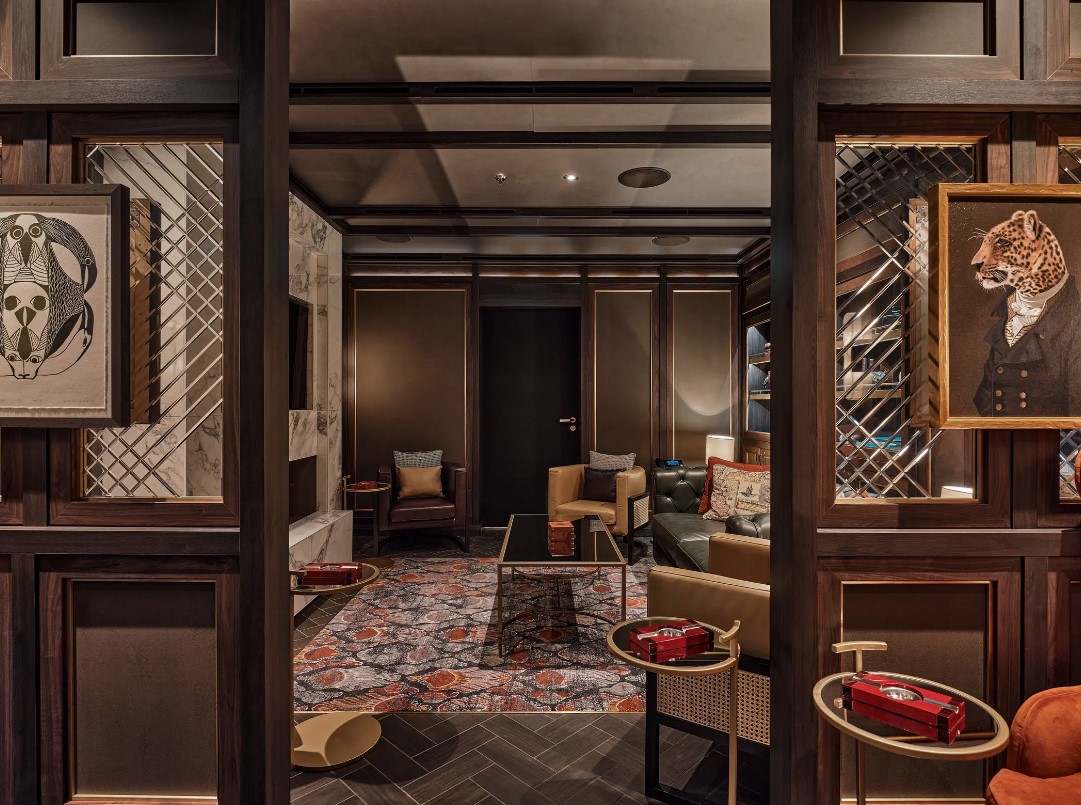

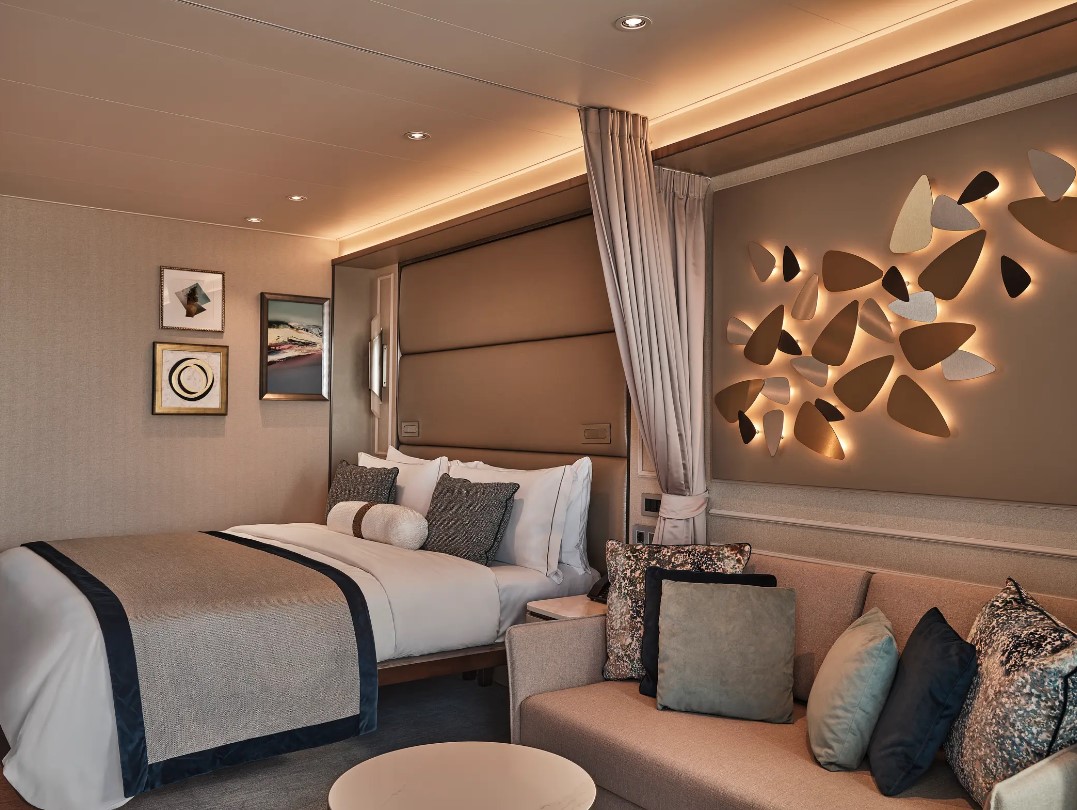

Inclusions
• Voyage on board in selected cabin category
• Butler service in every suite
• All meals on board*
• Beverages on board (Select wines, spirits and non-alcoholic beverages)
• Crew Gratuities (Excluding Spa & salon staff)
• Expedition excursions
• Lectures and entertainment on board
• Free wif-fi (Subject to coverage)
• Laundry service included for certain fare categories
• Self service laundry facilities available
• In country flights where required by the itinerary
*Some onboard restaurants incur an additional cost
• PRIVATE EXECUTIVE TRANSFERS
• INTERNATIONAL FLIGHTS - ECONOMY CLASS or Business Class upgrade at reduced rates
• AIRPORT TRANSFERS
• HOTEL
• CHARTER/GROUP FLIGHTS
Exclusions
• International flights unless otherwise stated
• Passport and visa costs if applicable
• Travel insurance
• Optional shore excursions
• Spa and Salon Treatments
• Complete valet services, including laundry, pressing and dry cleaning, are available at an additional charge
Our Associates Include
